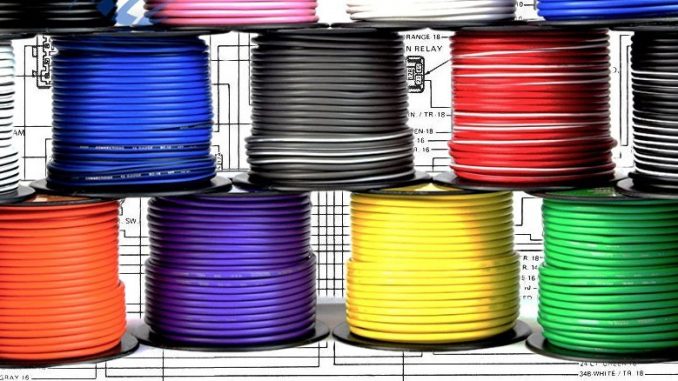
12 Volt Wiring Gauge Requirements at specific Amps to length for Automotive Electrical Systems … 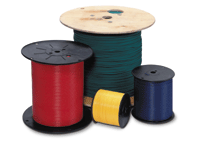
Wire uses the measurement of gauge to determine the size of the wire. The larger the wire, the smaller the gauge number. To find the required wire gauge for a specific application, you must know the current draw of the accessory on the circuit and the total wire length between the accessory and the power source. More current draw (higher amperage) requires a larger wire gauge to safely power the accessory.
Automotive Voltage is not 12 Volts
Automotive wiring is not exactly 12 volt. The actual resting voltage of a fully charged, 6-cell automotive lead acid battery is about 12.7 volts or about 2.1 volts per cell. 6.4 volts for a 6-volt lead-acid battery. Older batteries will probably show a lower voltage. When the vehicle is running, the alternator will increase the automotive voltage up to about 13.8 volts. 13.8 volts is a better value to use for wire gauge calculations though it will generally result in about the same gauge as 12 volts.
Resistance = Voltage Drop
With cable length comes resistance. All wire has inherent resistance and the longer the wire, the greater the resistance and the greater the voltage drop over the length of wire. For that reason, it is important to factor in the length of wire when determining the wire gauge. A 3-foot wire length will have less resistance than a 20-foot wire and therefore a longer length of wire may require an increase in the wire gauge to provide adequate voltage to the accessory. Installing too small a wire gauge decreases performance and may create a potential safety hazard. Alternately using an oversized wire gauge does not have a downside and may provide better performance of the accessory, however, overkill in itself has the downside of wasted money and valuable space. But when choosing between two potential gauge sizes in the gray area of estimated gauge calculations or references, it’s always better to go with the larger gauge.
Choosing the Wire Gauge
To choose an adequate wire gauge, determine the amp draw (amperage) that the wire circuit will carry. Then measure the distance that the wire will travel (length) including the length of the return to ground (the ground wire running to the chassis or back to a ground block or battery. Using these two numbers, Amps and length, locate the nearest gauge value in the chart below. For 6 volt automotive systems typically a wire gauge 2 sizes larger than what is shown should be used.
| Amps @ 13.8 Volts | LENGTH OF WIRE American Wire Gauge (AWG) | ||||||
| 0-4 ft. | 4-7 ft. | 7-10 ft. | 10-13 ft. | 13-16 ft. | 16-19 ft. | 19-22 ft. | |
| 0-10 | 16-ga. | 16-ga. | 14-ga. | 14-ga. | 12-ga. | 10-ga. | 10-ga. |
| 10–15 | 14-ga. | 14-ga. | 14-ga. | 12-ga. | 10-ga. | 8-ga. | 8-ga. |
| 15-20 | 12-ga. | 12-ga. | 12-ga. | 12-ga. | 10-ga. | 8-ga. | 8-ga. |
| 20-35 | 12-ga. | 10-ga. | 10-ga. | 10-ga. | 10-ga. | 8-ga. | 8-ga. |
| 35-50 | 10-ga. | 10-ga. | 10-ga. | 8-ga. | 8-ga. | 8-ga. | 6 or 4-ga. |
| 50-65 | 10-ga. | 10-ga. | 8-ga. | 8-ga. | 6 or 4-ga. | 6 or 4-ga. | 4-ga. |
| 65-85 | 10-ga. | 8-ga. | 8-ga. | 6 or 4-ga. | 6 or 4-ga. | 4-ga. | 4-ga. |
| 85-105 | 8-ga. | 8-ga. | 6 or 4-ga. | 4-ga. | 4-ga. | 4-ga. | 4-ga. |
| 105-125 | 8-ga. | 8-ga. | 6 or 4-ga. | 4-ga. | 4-ga. | 4-ga. | 2-ga. |
| 125-150 | 8-ga. | 6 or 4-ga. | 4-ga. | 4-ga. | 2-ga. | 2-ga. | 2-ga. |
| 150-200 | 6 or 4-ga. | 4-ga. | 4-ga. | 2-ga. | 2-ga. | 1/0-ga. | 1/0-ga. |
| 200-250 | 4-ga. | 4-ga. | 2-ga. | 2-ga. | 1/0-ga. | 1/0-ga. | 1/0-ga. |
| 250-300 | 4-ga. | 2-ga. | 2-ga. | 1/0-ga. | 1/0-ga. | 1/0-ga. | 2/0-ga. |
SWG and AWG are wire gauge systems used to represent the thickness of the wire. Different numbering systems are used depending on the type of metal. Non-ferrous metals (not containing iron) use American Wire Gauge System or AWG. Ferrous metals generally use Standard Wire Gauge (SWG).
Also see:
Automotive Wiring Tips – Using Relays
12 Volt Wiring Gauge Requirements at specific Amps for Automotive Electrical Systems
12 Volt Wiring – Distance and Amps to Gauge Chart
Converting Candlepower to Watts and vice-versa & Other Offroad Light Information
Automotive Wiring Tips & Techniques
HEI Ignition Installation and Review
Using LED lights in your Vehicle

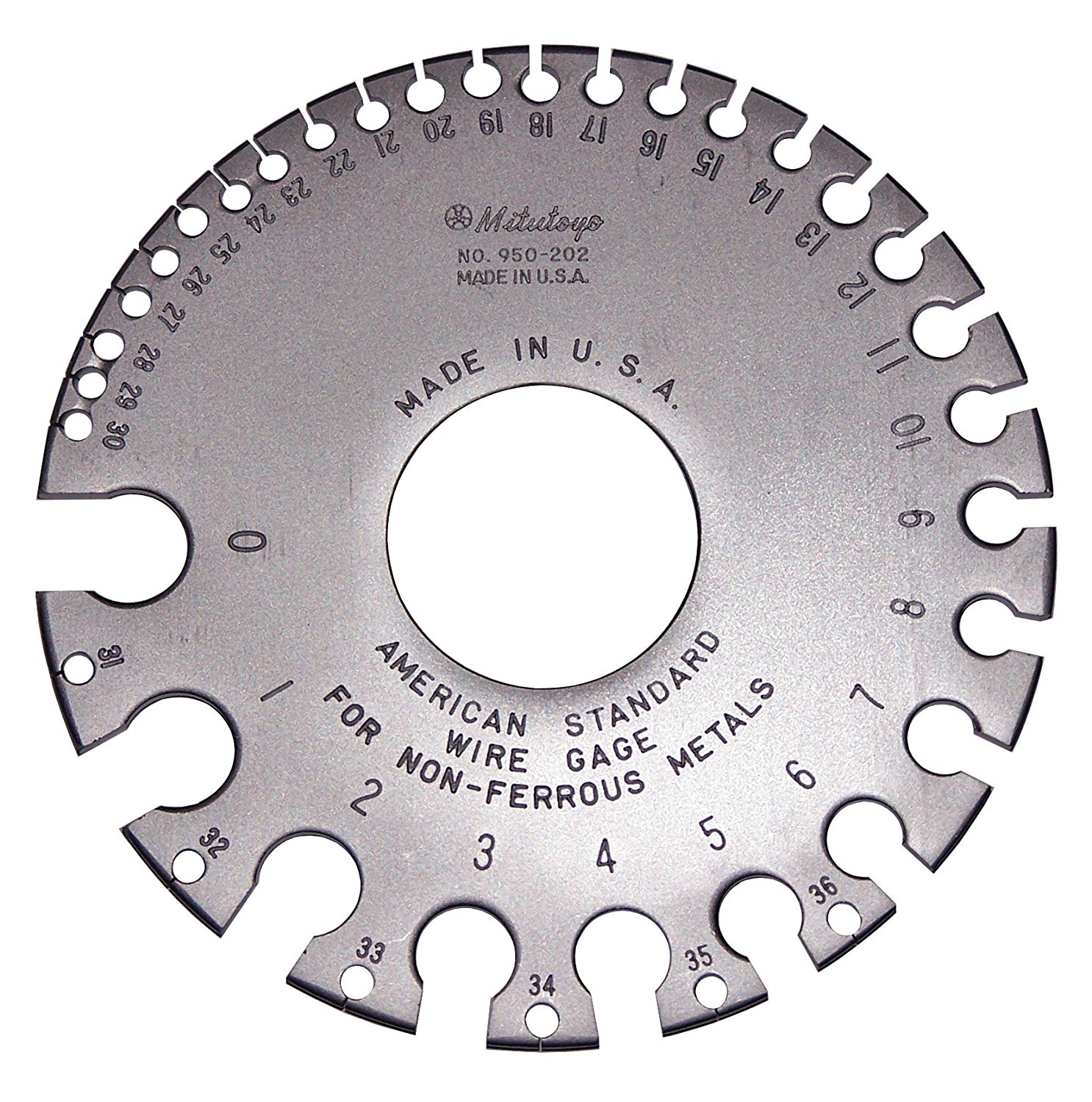
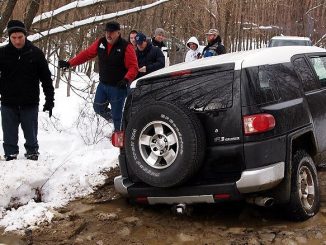
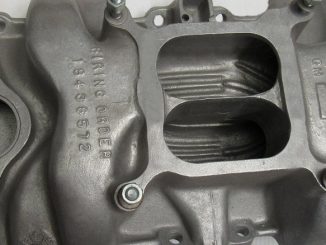

Between this chart and CBC (Custom Battery Cables) I was able to find out the proper sizing that I needed. I still didn’t quite understand what AWG I needed for what I’m trying to accomplish. Very helpful, thank you!
That’s a very comprehensive chart, but how do we account for the fact that on most automobiles (for the 50 yrs. I’ve been working on them) have 85% or more of their wiring in 18 gauge?
What has not yet been stressed is that a proper fuse must be installed as close to the SOURCE of the supply as possible. So when wiring from a car battery, a fuse must be installed right next to the battery. The goal is the ensure the wire between the battery and the fuse cannot ever be compromised and short to ground, causing very bad things to happen.
Also, be wary of the comment about sizing the fuse for the load. The potential failure there is that the appropriate research is not done to provide a large enough gauge, and the supply wire is actually not capable of handling the load. I have seen this happen. Focusing on the load is great and required, but the wire has to be thick enough to handle it with capacity to spare. Then, and only then, can you decide the fuse size, ensuring it is well less than the wire capacity.
Wire coloring makes the wires look pretty. Well maybe, but the real reason for wire colors is to identify them for their intended uses. The green wire is used for grounding, always! In the past, and I’ve personally seen this while working on an old school project. The “hot” wires, feeding branch circuits, were actually green in color. I was taken aback! Everything I had been taught about wire colors was now a red flag, and caution was the word working on the circuitry.
It seems like a LOT of people miss the simple point that the MOST IMPORTANT consideration to any of these auto electric projects is insuring you match the proper size fuse for the AGW wire size you install. Yes you need to consider total Amps that will be drawn by the load. Yes wire AGW size needs to be increased if you are running long lengths to avoid voltage drop… All these things seem to be well addressed on many sites with their charts. But it seems many fail to START OUT with the point of how important matching the fuse protection size to the calculated wire AGW size is. And it’s NOT about protecting the “device”. (whatever that may be). You can run a 0 AGW wire to supply some very small load (if you want to waste money). But you probably want to install a pretty large amp fuse at the START of that 0AGW wire so if you want to add more (stuff) at the other end of that line you will be able to add it later. You (could) install some extremely small amp rating fuse at the beginning of that large AGW wire if you think the purpose is to “protect the device”, But that’s really NOT why you choose the amperage rating of a fuse for a given circuit.It’s all about protecting the wires insulation from melting off if the heat generated by the overflow of current due to a short circuit should happen. It’s NOT to keep the TV or Stereo system or pump motor from being ruined.
Excellent wiring sizing reference site for RVs and adventure Van’s. Thank you for your efforts. The sizes recommend seem conservative and safe. While there’s a ton of other wiring aspects to consider for vehicles they are easily found while other sizing references just are not as easily understandable.
Cheers!
Scott P.
I was struggling to find info on very short runs of cable. All the other charts I’ve found rate 0-5 meters, but in my campervan build my batteries are right next to my inverter, so I couldn’t believe that I’d need giant 4AWG wiring for a 20cm run! Thanks for the great page!
James, thanks for the comments. Wow, 4AWG, you must have a huge inverter in that Mitsubishi Delica Campervan! Btw, really nice van you have. Looks like a really fun build!
Thanks Alan! Yes it’s going to have an 800w inverter. I’ll use about 500w charging my drone batteries, and another 100w for my laptop, plus a bit of overhead. Really loving the van, I’ve made a few additions (awning, new heavy duty springs etc) since my blog post and will do another write-up soon on how it’s been going. Thanks for visiting my blog 🙂
That Amps-to-AWG chart is the best I’ve come across on the web so far in terms of comprehensibility. What is your source or reference? All the charts I’ve found (Wikipedia, Engineer’s Toolbox, etc.) seem to have slightly different information, so that’s why I’m curious.
Hi Rick. Thanks for the comments. When we put the article together, the data came from a variety of sources including companies experienced in high amp automotive wiring such as Crutchfield, engineering sources experienced in copper wiring, and some info from wiring company recommendations. All of these sources took into consideration important factors such as the wire resistance and the unique electrical systems of automobiles. We didn’t use one source directly because like you see, they do vary so we averaged from these sources to come up with our recently updated chart. Hope you find it helpful!
Alan, good article. I would suggest a couple of additions. 1) The wire gauge needs to be selected to reflect the size of the fuse being used not just the load. Example: If the load was 40 Amps but the fuse limiting the current was 100 Amps you would need to select the wire gauge knowing that 100 Amps could flow. If there is no fuse then literally hundreds of Amps can flow as with a starter. 2) The jacket material of the wire and its resistance to abrasion and withstanding temperature are important considerations. Most of the time stranded wire is preferred due to resistance to vibration and sharp bend failures.
I think you are over-thinking the issue. There would be no need to put a 100amp fuse on a 40 amp circuit…in fact it would be dangerous. So it is not the load of a single source, or even the largest load, but the total load that determines not only the wire gauge but also the master fuse. In a multiple load circuit, each load may have its own fuse, which should be no larger than needed to protect that device. The supply wire, however, does need to service the total anticipated load. So if you have a 100 amp total anticipated load on a given circuit, the main supply wire needs to be rated to that total load for the length the wire runs to the point at which total load can be seen. After that point, smaller gauge wire and smaller fuses can be used as needed for load and length of run.
What has not yet been stressed is that a proper fuse must be installed as close to the SOURCE of the supply as possible. So when wiring from a car battery, a fuse must be installed right next to the battery. The goal is the ensure the wire between the battery and the fuse cannot ever be compromised and short to ground, causing very bad things to happen.
Also, be wary of the comment about sizing the fuse for the load. The potential failure there is that the appropriate research is not done to provide a large enough gauge, and the supply wire is actually not capable of handling the load. I have seen this happen. Focusing on the load is great and required, but the wire has to be thick enough to handle it with capacity to spare. Then, and only then, can you decide the fuse size, ensuring it is well less than the wire capacity.